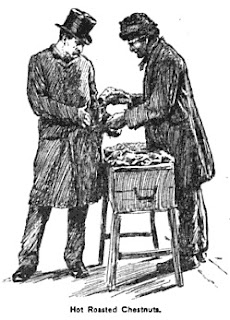Search This Blog
A strolling guide to New York City and beyond by writer and photographer Teri Tynes. The site was most active in the years 2007-2021 and is no longer updated.
Posts
Showing posts from December, 2011
The New Year in New York City, 19th Century Style: Calling on New Year's Day
- Get link
- Other Apps
The Year in Review: Walking off the Big Apple's Top New York Stories from 2011
- Get link
- Other Apps
From the Arch and Back Again: A Nighttime Stroll to See the Holiday Lights
- Get link
- Other Apps
Shopping Ladies' Mile in the Second Gilded Age: A Self-Guided Walk and Map
- Get link
- Other Apps
New York City Holiday Shopping: Online Artifacts from the Gilded Age
- Get link
- Other Apps
Imagining Christmas: Washington Irving's Solitary Walk, and a Stroll from Clement Clarke Moore's Chelsea to O. Henry's Irving Place
- Get link
- Other Apps
So, You've Arrived by Bus: Short Walks to NYC Attractions from the Port Authority Bus Terminal
- Get link
- Other Apps
20 New York City Books: Gift Guide 2011, Non-Fiction Edition
- Get link
- Other Apps
Nighttime New York Glamour: Three Blocks of 59th Street
- Get link
- Other Apps






